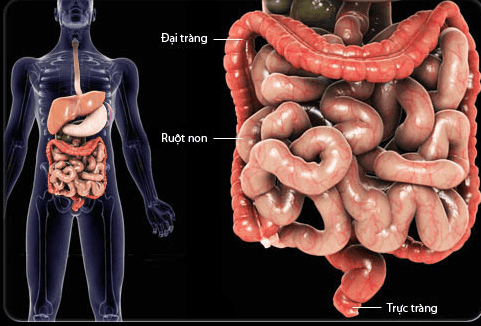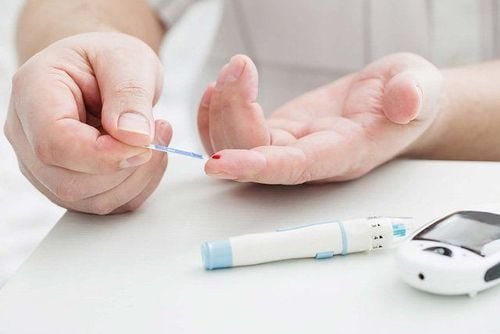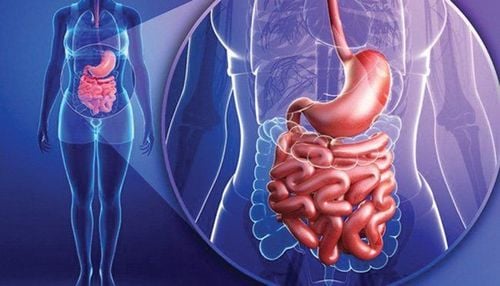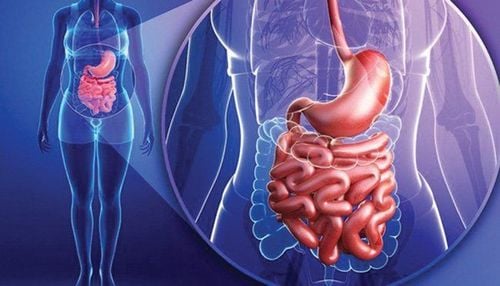This is an automatically translated article.
Posted by specialist doctor II Nguyen Xuan Thang - Deputy Head of Department of Medical Examination & Internal Medicine and Head of Inpatient Unit - Vinmec Central Park International General Hospital
Diabetes mellitus is a heterogeneous metabolic disorder characterized by hyperglycemia due to defects in insulin secretion, insulin action, or both. The chronic elevation of glucose over a long period of time causes disturbances in carbohydrate, protein, and lipid metabolism, and at the same time causes damage in many different organs, especially in the heart and blood vessels, kidneys, eyes, and nerves.
1. What is diabetes?
Diabetes mellitus (DM) is a heterogeneous metabolic disorder characterized by hyperglycemia due to defects in insulin secretion, insulin action, or both. Chronic elevation of glucose for a long time causes disturbances in carbohydrate, protein and lipid metabolism, causing damage in many different organs, especially the heart and blood vessels, kidneys, eyes, and nerves.
Diabetes classification includes:
Type 1 diabetes (due to destruction of pancreatic beta cells, leading to absolute insulin deficiency). Type 2 diabetes (due to impaired pancreatic beta cell function progressing against the background of insulin resistance). Gestational diabetes (diabetes diagnosed in the second or third trimester of pregnancy and without evidence of prior type 1 or type 2 diabetes). In addition, diabetes due to other causes, such as: Neonatal diabetes or diabetes caused by the use of drugs and chemicals such as glucocorticoid use, HIV/AIDS treatment or after tissue transplantation, etc.
2. Diagnosing diabetes
2.1 Diagnostic criteria for diabetes
Diagnostic criteria for diabetes (according to the American Diabetes Association - ADA) is based on 1 of the following 4 criteria:
a, Fasting plasma glucose (FPG) ≥ 126 mg/dL ( or 7 mmol/L). Patients must fast (do not drink soft drinks, can drink filtered water, cooled boiled water) for at least 8 hours (usually overnight fasting from 8-14 hours) b, Plasma glucose at the following time 2 hourly 75g oral glucose tolerance test (OGTT) ≥ 200 mg/dL (or 11.1 mmol/L). The oral glucose tolerance test should be performed according to the World Health Organization guidelines: The patient fasts from midnight before the test, administers an amount of glucose equivalent to 75g of glucose, dissolved in 250- 300 ml of water, drink for 5 minutes; During the previous 3 days, the patient ate a diet containing about 150-200 grams of carbohydrates per day. c, HbA1c ≥ 6.5% (48 mmol/mol). This test must be performed in a laboratory standardized to international standards. d, In patients with classic symptoms of hyperglycemia or plasma glucose levels at any time ≥ 200 mg/dL (or 11.1 mmol/L). If there are no classic symptoms of hyperglycemia (including polyuria, polydipsia, binge eating, unexplained weight loss), the diagnostic test a, b, and d above should be repeated a second time. to confirm the diagnosis. The time to perform the second test after the first one can be from 1 to 7 days.
In practical conditions in Vietnam, a simple and effective method to diagnose diabetes should be used, which is to measure fasting plasma glucose twice ≥ 126 mg/dL (or 7 mmol/L). If HbA1c is measured in an internationally standardized laboratory, double HbA1c can be used to diagnose diabetes.
2.2. Diagnosis of pre-diabetes
Diagnosis of prediabetes when one of the following disorders is present:
Impaired fasting glucose (IFG): Fasting plasma glucose from 100 (5.6mmol/L) to 125 mg/dL (6.9 mmol/L), or Impaired glucose tolerance (IGT): Plasma glucose at 2 h after oral glucose tolerance test 75 g from 140 (7.8 mmol/L) L) to 199 mg/dL (11 mmol/L), or HbA1c from 5.7% (39 mmol/mol) to 6.4% (47 mmol/mol).

3. Symptoms of diabetes
The following diabetes symptoms are typical. However, some people with type 2 diabetes have mild symptoms that go unnoticed.
Frequent urination Feeling very thirsty Feeling very hungry – even while eating Very tired Blurred vision Slow healing of wounds or sores: Weight loss – even while eating more (type 1 diabetes) Tingling, pain, or numbness in the hands or feet (type 2 diabetes)
4. Complications of diabetes
People with diabetes have a higher risk of developing a number of serious health problems. Long-term high blood sugar levels can lead to serious diseases that affect the heart, blood vessels, eyes, kidneys, nerves, and teeth. In addition, people with diabetes are also at increased risk of bacterial infections. In most high-income countries, diabetes is the leading cause of cardiovascular disease, blindness, kidney failure and lower limb amputation. Adults with diabetes have a 2- to 3-fold increased risk of heart attack and stroke. Diabetic retinopathy is an important cause of blindness due to the long-term accumulation of small blood vessels in the retina. 2.6% of global blindness can be attributed to diabetes. Diabetes is one of the leading causes of kidney failure.
Maintaining normal or near-normal blood sugar, blood pressure, and cholesterol levels can help delay or prevent complications of diabetes. Therefore, people with diabetes need to be monitored regularly.
4.1. Cardiovascular complications of diabetes
Diabetes affects the heart and blood vessels and can cause fatal complications such as coronary artery disease (which leads to a heart attack) and stroke. Cardiovascular disease is the most common cause of death in people with diabetes. High blood pressure, high cholesterol, high blood glucose, and other risk factors contribute to an increased risk of cardiovascular complications.

4.2. Kidney complications of diabetes
Kidney complications from diabetes are caused by damage to the small blood vessels in the kidneys leading to kidney failure or kidney failure. Kidney disease is more common in people with diabetes than in people without diabetes. Maintaining normal blood glucose levels and blood pressure can significantly reduce the risk of kidney disease.
4.3. Complications of diabetes on the nervous system
Diabetic neuropathy causes nerve damage throughout the body when blood glucose and blood pressure are too high. This can lead to digestive problems, erectile dysfunction and many other functions. In the most affected areas are the extremities, especially the feet. Nerve damage in these areas is called peripheral neuropathy and can lead to pain, tingling, and loss of sensation. Loss of sensation is particularly important because it can allow trauma to go unnoticed, leading to serious infection and possibly amputation. People with diabetes are 25 times more likely to have a limb amputation than people without diabetes. However, with comprehensive management, a large proportion of diabetes-related amputations can be prevented. Even with amputation, the remaining leg and the patient's life can be saved and improved with good follow-up care by the multidisciplinary team. People with diabetes should check their feet regularly.
4.4 Complications of diabetes on the eyes
Most people with diabetes will develop some type of eye disease, retinopathy that reduces vision, or blindness. Persistently high blood glucose levels along with high blood pressure and high cholesterol are the main causes of retinopathy. This condition can be managed through regular eye exams and control keeping blood glucose and lipid levels normal or near normal.
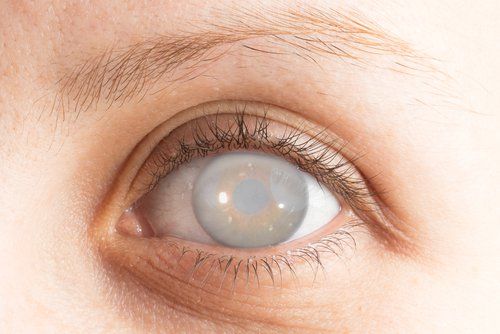
5. Diabetes screening
Need to screen for diabetes in people at risk:
Adults with BMI 23 kg/m2, or weight greater than 120% of ideal body weight and have one or more of one of the risk factors following:
Physical inactivity. The family has someone with diabetes in the next generation (father, mother, siblings). Hypertension (systolic blood pressure ≥ 140 mmHg and/or diastolic blood pressure ≥ 90 mmHg or on antihypertensive medication). HDL cholesterol level <35 mg/dl (0.9 mmol/L) and/or triglyceride level > 250 mg/dL (2.82 mmol/L). Enlarged abdomen: in men ≥ 90 cm, in women ≥ 80 cm Women with polycystic ovaries. Women who have had gestational diabetes. HbA1c ≥ 5.7% (39 mmol/mol), impaired fasting blood glucose or impaired glucose tolerance at the previous test. There are clinical signs of insulin resistance (eg, obesity, acanthosis nigricans, etc.). History of atherosclerotic cardiovascular disease. In patients without the above signs/symptoms, start testing for early diabetes in people ≥ 45 years of age. Diabetes is a dangerous disease with many complications, so early diagnosis can control the disease at an optimal level. Accordingly, when being diagnosed with diabetes, the patient needs to strictly follow the doctor's instructions, and maintain a reasonable and healthy diet to avoid high blood sugar.
>> See more: Groups of drugs to treat diabetes
Diabetes is a disease that can be encountered in all subjects, especially now this disease is also at risk of rejuvenation. Realizing that danger, Vinmec International General Hospital has been deploying a screening package for diabetes and dyslipidemia to help detect pre-diabetes early, classifying the main classification. Identify the type of diabetes, at the same time build a nutritional regimen, monitor to minimize the risks and complications caused by diabetes.
Customers can directly go to Vinmec Health system nationwide to visit or contact the hotline for support.
Please dial HOTLINE for more information or register for an appointment HERE. Download MyVinmec app to make appointments faster and to manage your bookings easily.






